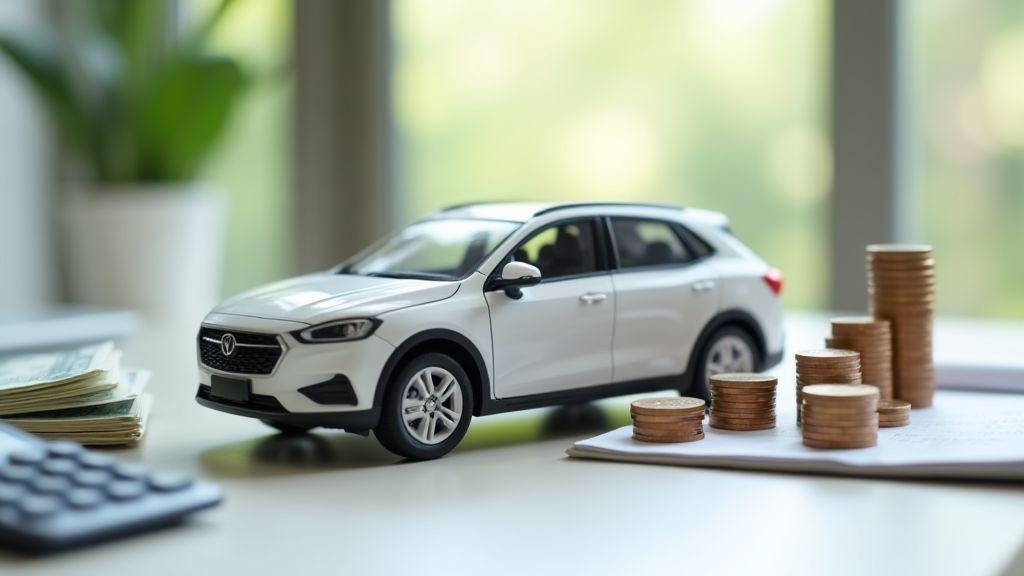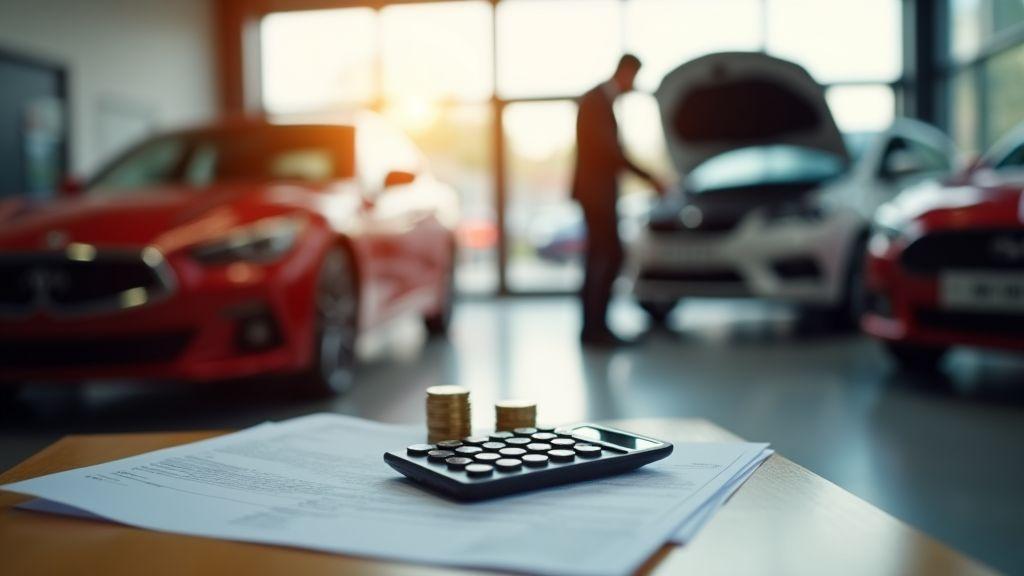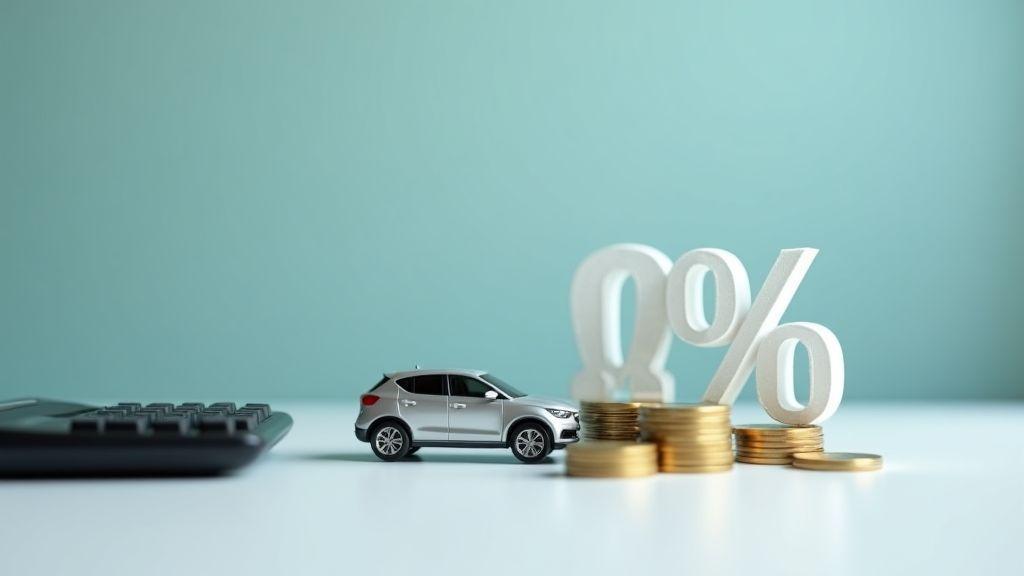How Much Down Payment Should You Make When Financing a Car?
This guide tells you how to pick the right down payment for both new and used cars. You will learn why experts favor larger down payments for new cars to avoid fast negative equity, and why smaller down payments often work for used cars. You will see how a bigger down payment cuts your monthly payments, lowers total interest, and can improve your APR and rebate options. You will also get practical tips on lender minimums, dealer financing rules, saving strategies, and how to use a car loan calculator to test real examples that fit your budget.
Key Takeaway
- Make a sizable down payment to lower your monthly payment.
- Save so you do not end up owing more than your car is worth.
- Keep cash for emergencies before you increase your down payment.
- Use a larger down payment to get better loan offers.
- Add your trade-in value to cut the cash you pay up front.

Recommended car down payment percentage for new and used cars you buy
You should plan your down payment to protect your wallet and your credit. A common starting point is 20% for new cars and 10% for used cars. These numbers cut your monthly payment, lower the interest you pay, and reduce the chance you’ll owe more than the car is worth—negative equity. For more on shopping and comparing offers, see the CFPB consumer guide to auto loans and financing.
Ask yourself: How Much Down Payment Should You Make When Financing a Car? If you want a short answer: put down more to lower risk; put down less only if you need to and can afford higher monthly payments. Your situation—income, savings, and how long you keep the car—changes the right answer.
Think about the trade-offs. A larger down payment means less interest and less risk of upside-down loans. But using all your savings could leave you short for emergencies. Balance cash reserves, monthly budget, and the vehicle’s expected depreciation before you decide.
Why many experts suggest 20% for new cars to avoid fast negative equity
New cars lose value fast in the first years. If you finance with little or no down payment, the loan balance can exceed the car’s value within months. That gap is negative equity, and it can trap you if you need to sell, trade in, or if the car is totaled.
Putting 20% down builds an immediate equity cushion. For example, on a $30,000 car, $6,000 down lowers what you finance to $24,000. That cushion helps your loan stay closer to market value as the car drops in price. Lenders and insurers view this as safer, and you’ll likely avoid rolling old debt into a new loan.
Why 10% is a common guideline for used cars based on lower price and risk
Used cars usually have already taken the biggest depreciation hit, so the risk of sudden steep drop is smaller. A 10% down payment on a used car gives reasonable protection without draining your savings. It also keeps monthly payments sensible for buyers on a tighter budget.
Still, used cars vary. A low-mileage 3-year-old car may need more down to match loan terms, while an older, cheap car might need less. Watch for higher interest rates on used auto loans—a small down payment plus a high rate can still lead to costly monthly payments.
How much down payment for a car to aim for based on vehicle age and loan terms
Aim higher for newer cars and longer loan terms. Short loans (36–48 months) lower total interest, so you can sometimes get away with a smaller down payment if you can afford the monthly payments. For long loans (60–72 months), raise your down payment to avoid negative equity and steep interest costs.
- Calculate the car price and your monthly budget.
- Match vehicle age to the table below to pick a target down payment.
- Increase the down payment for longer loan terms or higher interest rates.
| Vehicle age | Typical loan term | Recommended down payment |
|---|---|---|
| Brand new (0–3 years) | 36–72 months | 20% |
| Lightly used (3–7 years) | 36–60 months | 10–15% |
| Older (7 years) | 24–60 months | 5–10% (or cash purchase if possible) |

How down payment affects monthly car payments and total interest you pay
Paying a larger down payment cuts the loan balance from the start. That means your monthly payment drops because you borrow less. If you ask, “How Much Down Payment Should You Make When Financing a Car?” a good rule is to weigh how much lower monthly bills will ease your budget versus how much cash you need for other expenses.
A bigger down payment also trims the total interest you pay over the life of the loan. Interest is charged on the money you borrow. Borrow less, pay less in interest. Small changes add up—cutting a few dollars off each month becomes a big drop in overall interest. The Federal Reserve consumer guide to credit and loans explains how principal, interest, and loan terms interact and why reducing principal early saves you money.
But there’s a trade-off. Tying up too much cash in the car can leave you short for emergencies or better investments. You want to lower payments and interest, without emptying your pockets. Aim for balance: reduce the loan amount enough to make payments comfortable, while keeping an emergency buffer.
How a larger down payment lowers your loan balance and monthly cost
When you put more money down, the principal—the amount you borrow—shrinks immediately. Monthly payments are a function of principal, rate, and term. Cut the principal and the math favors you. You’ll see a smaller bill each month and fewer months where you’re underwater on the car.
Lower monthly cost makes budgeting easier and may let you afford a shorter loan term. Shorter terms usually mean higher monthly payments but far less total interest. If you want to pay the car off faster, a larger down payment makes that plan realistic without breaking your monthly budget.
How down payment impact on car financing changes APR and total interest paid
Lenders view a larger down payment as lower risk. You show commitment and reduce the chance the loan goes underwater if the car depreciates. That can translate to a better APR—sometimes a fraction of a point, sometimes more. Even a small drop in APR reduces the total interest over years.
Beyond APR, your reduced principal directly cuts interest dollars because interest accrues on a smaller base. Combine a lower APR with a smaller loan and you’ll save noticeably.
How down payment affects monthly car payments in simple numbers you can check
Below is a clear example you can plug into your own calculator. It uses a $30,000 car, 6% APR, and 60 months. Change the price, rate, or term to match your deal.
| Down Payment | Loan Amount | Monthly Payment | Total Interest (60 mo) |
|---|---|---|---|
| 0% ($0) | $30,000 | $580 | $4,800 |
| 10% ($3,000) | $27,000 | $521 | $4,260 |
| 20% ($6,000) | $24,000 | $464 | $3,840 |

Minimum down payment for car loan rules and dealer financing options you should know
You need to know that a down payment cuts the loan size, lowers monthly payments, and often lowers APR. Lenders set rules based on your credit score, the vehicle age, and the loan term. For many banks and credit unions, the minimums are small — but that doesn’t mean small is smart.
Before you provide personal details for pre-approval or dealer paperwork, review the site’s privacy policy and the terms of use so you understand how information is handled.
Ask yourself: “How Much Down Payment Should You Make When Financing a Car?” The short answer is: enough to avoid being upside down and to qualify for the lowest offers you can get. If you put nothing down, you may pay more in interest or lose access to special rates. If you trade equity or pay a moderate down payment, you often get better terms and more bargaining power.
Dealer financing options vary. Dealerships offer captive lender deals, bank arrangements, and in-house financing. Captive offers (manufacturer finance) can include 0% APR or reduced rates, but they often need certain credit tiers or a specific down payment. In-house deals may accept low down payments but charge higher rates. Always compare the total cost, not just the monthly payment. See the U.S. government car-buying checklist and tips for steps to compare offers and consumer protections.
Typical lender minimums and when zero down offers may still raise your APR
Most banks and credit unions accept 0–10% down for new cars if your credit is good. For used cars, lenders often want 10–20% down depending on vehicle age. A good rule is: the older the car, the larger the down payment lenders prefer. If you have strong credit, you can often get small or no down payment and still a fair rate.
Zero down can be a trap. Dealers may advertise $0 down but wrap fees into the loan or push a higher APR. You might also face negative equity if the car depreciates quickly. Before you sign, run the numbers. Compare total interest paid and the loan balance after two years.
- Check the advertised rate and ask if a down payment changes it.
- Ask for a written breakdown of fees and how the dealer adjusts the APR.
- Compare a bank or credit union pre-approval to the dealer offer, or contact our team to discuss preapproval options and what to expect.
| Offer type | Typical minimum down | What to watch for |
|---|---|---|
| Bank / Credit Union | 0–10% (new) / 10–20% (used) | Lower fees, steady rates |
| Captive (maker) | 0–10% | May require strong credit for 0% APR |
| Dealer / Buy-here-pay-here | 0–20% | Higher APR, extra fees possible |
What dealer incentives and manufacturer deals require for best rates
Manufacturer incentives like 0% APR or cash rebates usually come with strings. You may need to finance through the manufacturer’s lender and meet a credit score threshold. Some rebates require a down payment or trade-in. Read the fine print: often you must choose between a cash rebate or low-rate financing — you can’t take both.
Dealers also add short-term incentives for end-of-year models or slow sellers. If you want the lowest rate, ask what exact credit score band they use and whether the offer changes with a down payment. Then test a bank pre-approval to see which path saves you more over the life of the loan.
How much down payment for a car to qualify for special financing and rebates
To qualify for most special financing or rebates, you typically need between $0 and $2,500, or about 5–10% of the vehicle price for stronger offers. Higher-value rebates or the very best 0% APR can require excellent credit plus a modest down payment or trade-in.

Best down payment when financing a car and practical strategies you can use
A solid target is 20% on a new car and 10% on a used car if you can swing it. That reduces the loan amount, lowers your chance of owing more than the car is worth, and usually cuts your monthly payment. Ask yourself: How Much Down Payment Should You Make When Financing a Car? — aim for those targets if your budget allows.
If you can’t hit those numbers, don’t panic. Even a smaller down payment helps. Put down at least enough to cover taxes and fees so your loan starts on the car, not on dealer add-ons. Bigger down payments reduce interest paid over the life of the loan and make trade-ins simpler.
Practical moves you can use right away: keep cash for an emergency fund first, then add to your down payment pot, look for lower-rate loans or short loan terms, and avoid financing long terms just to lower payments. If you find 0% APR deals, weigh that against the value of keeping cash in your pocket.
How to balance the best down payment with keeping an emergency fund
Protect your cash cushion. A good rule is to keep 3 months of living expenses before you drain savings for a down payment. If you empty your emergency fund to buy a car, one surprise repair or job loss can force you back into high-interest debt.
- Calculate three months of essential expenses and set that as a minimum emergency balance.
- Decide your target down payment percentage and set a timeline.
- Split savings: funnel a steady portion to the emergency fund and a steady portion to the down payment jar.
- Re-evaluate if a special low-rate loan appears — you may keep more cash and still get good terms.
When putting more down cuts monthly cost versus when to finance less
Putting more down lowers the principal, so your monthly payment drops and total interest falls. That’s clear when the loan has a high APR or a long term. If you plan to keep the car for many years, a larger down payment pays off like planting a tree — the shade comes later in lower interest and less stress.
But there are times you should finance more and keep cash. If a dealer offers a true 0% APR or a deep rebate, financing with little down can make sense because you avoid paying interest and keep your savings for emergencies or investments. Also, if putting cash down would leave you vulnerable to short-term risks, finance more and sleep better at night.
Tips for saving car down payment before you shop and build your buffer
Start with automatic transfers to a separate savings account, sell unused items, pick up short-term gigs, and cut one recurring expense for a few months — these add up fast. Aim for steady, painless wins so you build a buffer without feeling squeezed.

How much to put down on a new car versus a used car to protect your value
For a new car, aim for about 20% of the purchase price if you can. New cars lose a big chunk of value the moment you drive off the lot. A larger down payment gives you immediate equity, cuts your monthly payment, and lowers the chance you’ll owe more than the car is worth. For background on why value falls and how that affects resale, see Understanding vehicle depreciation and resale value.
For a used car, the right amount depends on age and condition. A certified pre‑owned (CPO) vehicle usually needs 10–15% down because it’s newer and often under warranty. For older cars or private sales, you may want to put down at least 10% or pay cash. Older cars can be cheaper to buy but risk higher repair costs and faster depreciation, so your down payment helps absorb those ups and downs.
Ask yourself: what’s the resale risk and how long will you keep the car? If you plan to trade or sell in a few years, protect your value with a higher down payment. If you plan to keep a reliable used car for a long time, a smaller down payment can work if you avoid long loan terms.
Why new car depreciation makes a larger down payment helpful
New cars drop value fast in the first year — often 20% or more. That drop can leave you owing more than the car is worth if you financed with little or no down payment. By putting down 20%, you build headroom so small market swings or a later low trade‑in won’t leave you underwater.
A bigger down payment also lowers your monthly payment and interest paid over the loan. Think of the down payment as a buffer or shock absorber. Put some cash down and you protect your wallet and sleep better at night.
Used car down payment advice for private sales, certified pre‑owned, and older cars
Private sales are often cheaper up front, but they carry more risk. If you buy from a private seller, get an inspection and consider a larger down payment — 10–20% — so repairs or title issues don’t wreck your budget. Lenders may view private deals as higher risk, so a higher down payment can help you qualify and get better terms.
For certified pre‑owned cars, aim for 10–15%. For older cars (higher mileage, 8 years), try to avoid long loans. Either put down more cash or plan to pay shorter terms to protect yourself from paying interest on a car that may soon need big repairs.
How much to put down on a new car or used car based on resale risk
Match your down payment to resale risk: high risk (new, fast depreciation) → ~20%; moderate risk (CPO, recent used) → 10–15%; higher repair risk (older, private sale) → 10–20% depending on condition and how long you’ll keep it.
| Car Type | Typical 1st‑Year Drop | Recommended Down Payment | Quick Note |
|---|---|---|---|
| New car | ~20% | ~20% | Protect against big early depreciation |
| Certified pre‑owned | ~10% | 10–15% | Warranty lowers risk |
| Private sale (younger used) | Varies | 10–15% | Get inspection, title check |
| Older/High‑mileage | Low price, high risk | 10–20% | Avoid long loans; be ready for repairs |
How Much Down Payment Should You Make When Financing a Car? Use these ranges as a starting point, then adjust for your budget, loan terms, and how long you’ll keep the vehicle.

Use a car loan down payment calculator and simple examples to decide your amount
A car loan down payment calculator helps you see real numbers fast. Enter the price, APR, term, and a trial down payment and the calculator shows the new monthly payment instantly. That lets you test several options without sitting through a sales pitch. Government resources can help you Compare car loans and interest costs easily and use calculators to test scenarios.
Start with a target monthly payment and work backward. Try a few down payment amounts and watch how the monthly payment and total interest move. Small increases in down payment can cut monthly costs and interest paid over the life of the loan, so you can weigh whether it’s better to save for a larger down payment or keep cash for other needs.
How to input price, APR, term, and down payment to see monthly payment changes
Enter the vehicle price first. Then put in the APR as a percentage (for example, 6 for 6%). Set the loan term in months or years — common choices are 36, 48, 60, or 72 months. Finally, try different down payment amounts. The calculator will update the loan amount and show your new monthly payment right away.
The numbers show that a bigger down payment meaningfully cuts monthly payments and interest. Use a calculator to test your own price, APR, and term.
How to compare scenarios to find how much down payment for a car meets your budget
Pick a few realistic down payment amounts — for example, 0%, 10%, and 20% of the price. Run each scenario in the calculator and write down the monthly payment, total interest, and how much cash you need up front. Compare those scenarios against your monthly budget and emergency cushion. The key is balancing monthly comfort with financial safety.
How to use a car loan down payment calculator to pick the right down payment for you
Treat the calculator like a test drive for numbers: try a few down payments, note the monthly payment and total interest, and compare that to your budget and savings goals. Use this short checklist to guide you:
- Enter price, APR, and term.
- Try multiple down payments.
- Note monthly payments and total interest.
- Pick the option that leaves you comfortable monthly and with an emergency buffer.
Conclusion
You’ve got the map. Aim for 20% on a new car and 10% on a used car as sensible starting points. Give yourself a head start so you don’t end up underwater with negative equity.
Balance matters. Keep a 3‑month emergency fund before you drain savings for a down payment. That safety net helps you sleep better at night if repairs or job changes hit. Use a car loan calculator to test scenarios: plug in price, APR, loan term, and different down payments. Small changes can shave hundreds off your total interest and lower the monthly bill.
Don’t chase monthly payment illusions. Compare total cost, ask about trade‑in value, and get a bank or credit‑union preapproval. A true 0% APR or manufacturer rebate can flip the math — sometimes financing more while keeping cash makes sense.
Think of the down payment as a shock absorber: it reduces what you owe, improves offers, and makes shorter loans realistic. But don’t sacrifice your emergency cushion for a slightly lower payment. Run the numbers, test a few down payment levels, and pick the option that leaves you comfortable and protected. Remember the question: How Much Down Payment Should You Make When Financing a Car? — use the ranges here as your starting point and adjust to your situation.
For more helpful, practical guides, visit the Meridian Pioneer home page.

